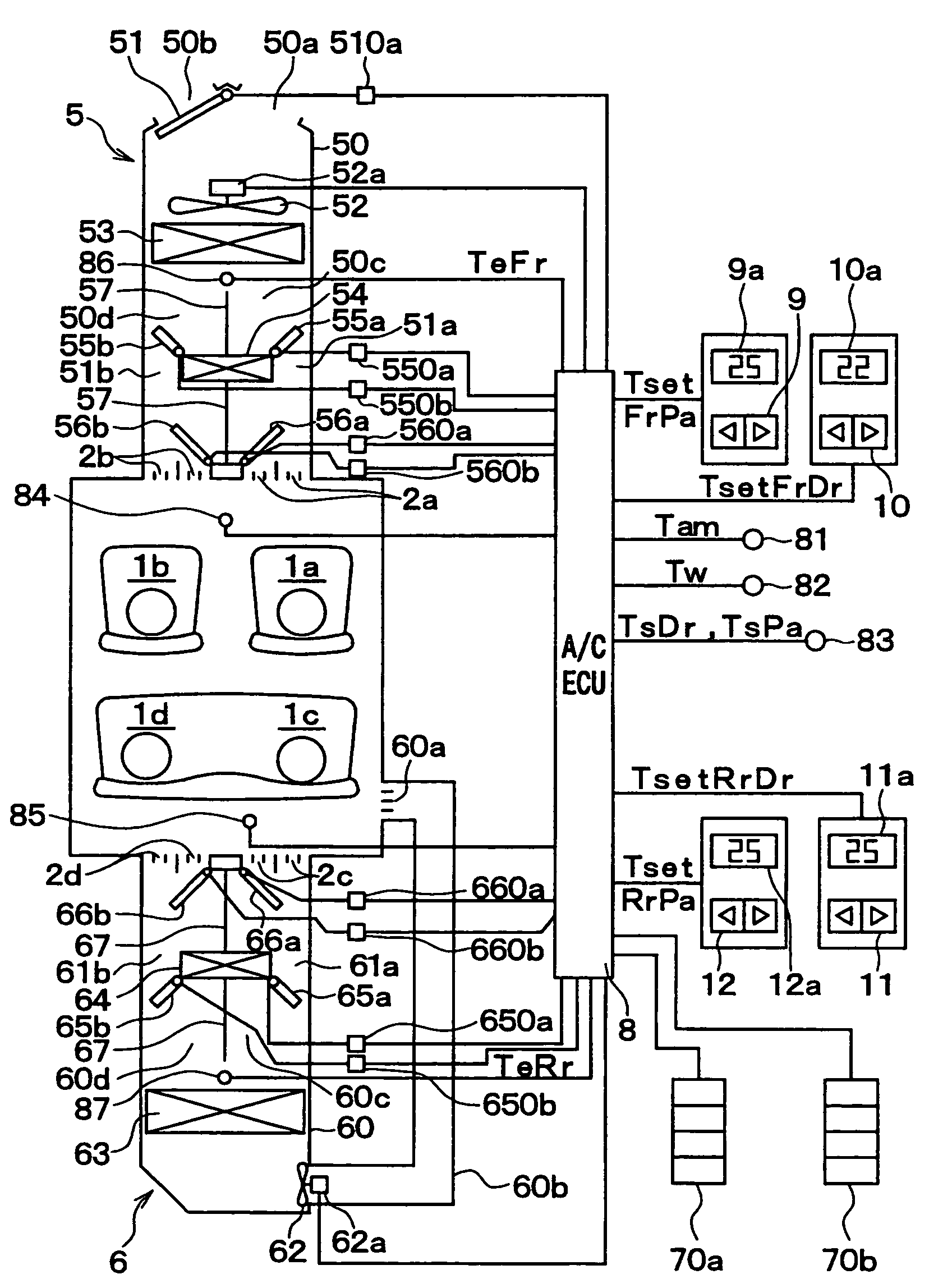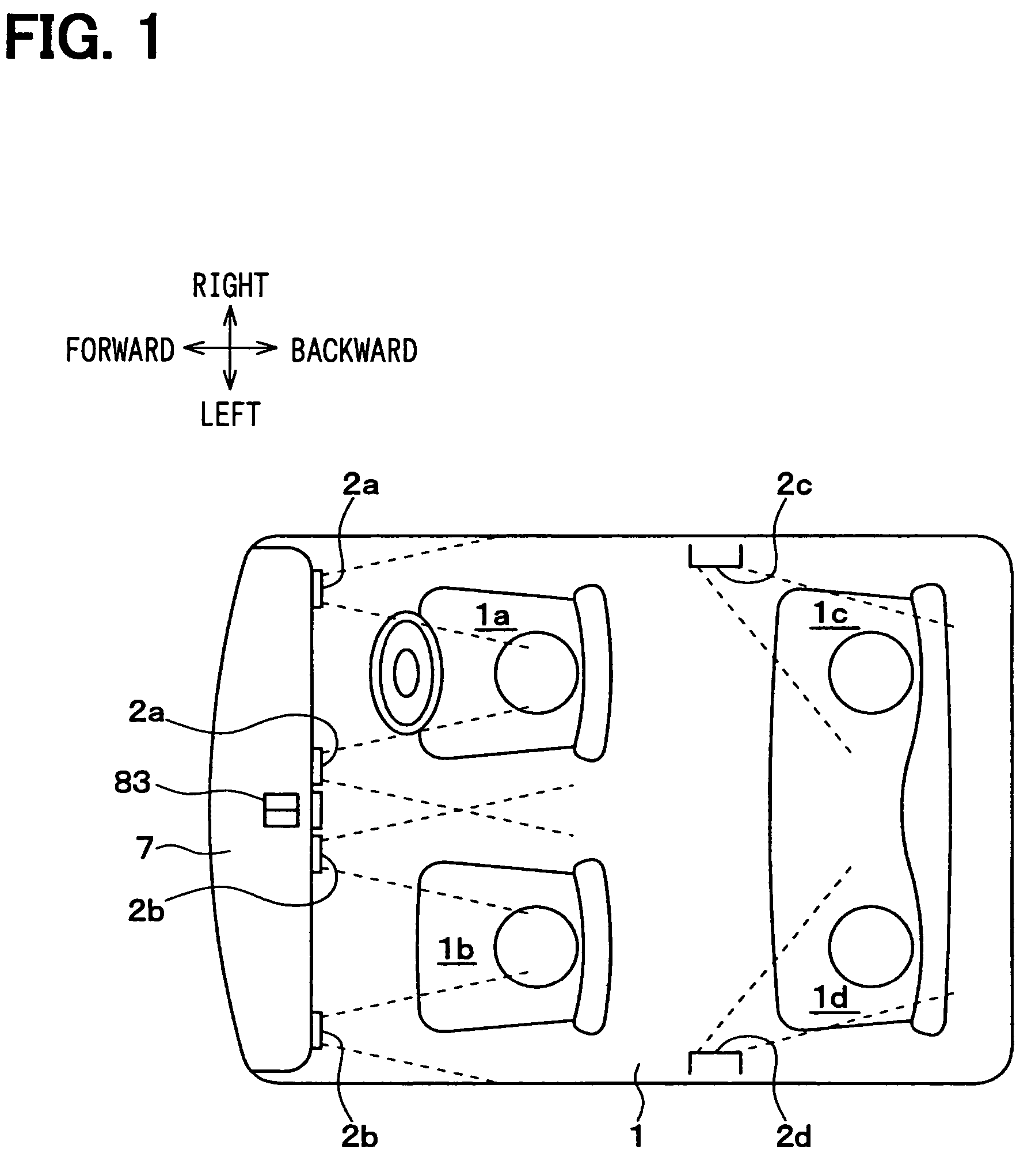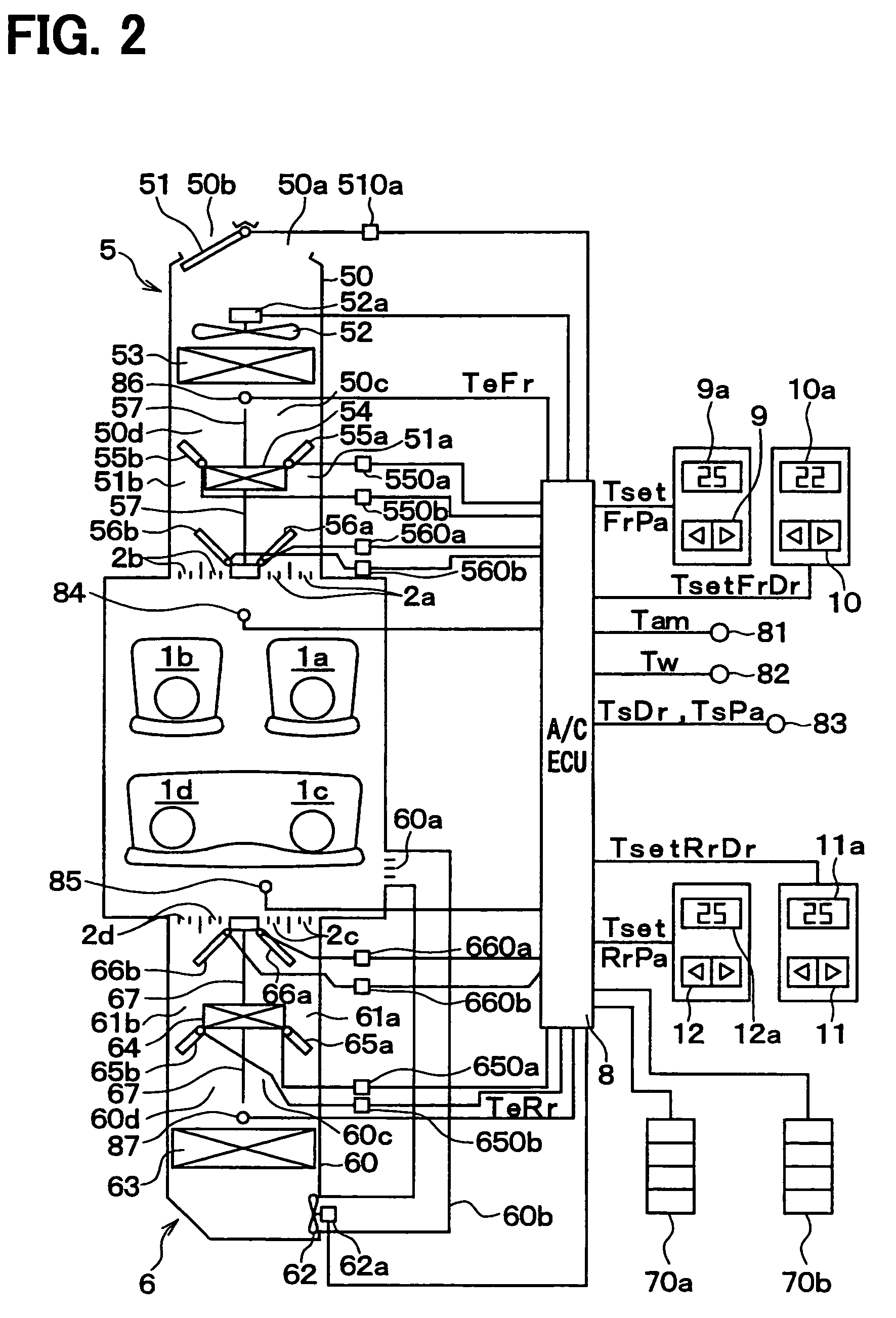Air conditioning system for motor vehicle
a technology for air conditioning systems and motor vehicles, which is applied in the direction of process and machine control, lighting and heating apparatus, instruments, etc., can solve the problems of insufficient comfort for passengers in the above conventional system, the electronic control unit controlling the target blowing air temperature is reduced, and the temperature of clothing is increased
- Summary
- Abstract
- Description
- Claims
- Application Information
AI Technical Summary
Benefits of technology
Problems solved by technology
Method used
Image
Examples
first embodiment
[0043]A first embodiment of the present invention will now be explained with reference to the drawings, wherein FIG. 1 is a schematic plan view showing a layout of air blowing ducts of an inside air conditioning unit for an air conditioning system according to the first embodiment, and FIG. 2 is a schematic view showing a total system including the inside air conditioning unit and control blocks.
[0044]In the first embodiment, a passenger compartment 1 of a motor vehicle is divided into four air conditioning spaces 1a to 1d, and an air conditioning operation for the four air conditioning spaces (front and rear, and right and left) 1a, 1b, 1c and 1d are independently performed. A motor vehicle having a right-hand steering wheel is shown in FIGS. 1 and 2. The air conditioning space 1a is a space of the front and right side (i.e. a space for a vehicle driver's seat), and the air conditioning space 1b is a space of the front and left (i.e. a space for an assistant driver's seat).
[0045]Th...
second embodiment
[0196]According to a second embodiment of the present invention, a contribution ratio of the detection value by the IR sensor 70a (70b) is changed to give the more comfortable feeling to the passenger, as explained hereinafter.
[0197]In the second embodiment, the target blowing air temperature is determined by the ECU 8 in accordance with the flow charts shown in FIGS. 12 and 13, instead of FIG. 9. The same references to FIG. 9 are used in FIGS. 12 and 13 for the same process (or for the substantially same process).
[0198]The process goes from the step S1231 to the step S1232 and the step S1233, when the ECU 8 determines (YES) at the step S1231 that the air conditioning operation for the rear right space 1c is in the normal condition, based on the inside air temperature signal “TrRr” from the inside air temperature sensor 85, and the ECU 8 determines (YES) at the step S1232 that it is the winter season, based on the outside air temperature signal “Tam” from the outside air temperature...
third embodiment
[0231]According to a third embodiment, an air conditioning power is increased during a predetermined time period after the ECU determines that the passenger has got into the vehicle, so that more comfortable feeling by the conditioned air (hot air or cold air) can be given to the passenger, even shortly after he got into the vehicle. An operation for the rear right space 1c will be explained with reference to FIGS. 14 to 22.
[0232]The matrix IR sensor 70a of the embodiment comprises four thermoelectric couples Drr1 to Drr4, wherein detection areas of the thermoelectric couples Drr1 to Drr3 are those body portions of the passenger in the rear right space 1c, as shown in FIGS. 14 and 15.
[0233]More specifically, the detection area of the thermoelectric couple Drr1 is formed at the shoulder portion of the passenger, the detection area of the thermoelectric couple Drr2 is formed at the abdomen portion of the passenger, and the detection area of the thermoelectric couple Drr3 is formed at ...
PUM
 Login to View More
Login to View More Abstract
Description
Claims
Application Information
 Login to View More
Login to View More - R&D
- Intellectual Property
- Life Sciences
- Materials
- Tech Scout
- Unparalleled Data Quality
- Higher Quality Content
- 60% Fewer Hallucinations
Browse by: Latest US Patents, China's latest patents, Technical Efficacy Thesaurus, Application Domain, Technology Topic, Popular Technical Reports.
© 2025 PatSnap. All rights reserved.Legal|Privacy policy|Modern Slavery Act Transparency Statement|Sitemap|About US| Contact US: help@patsnap.com



